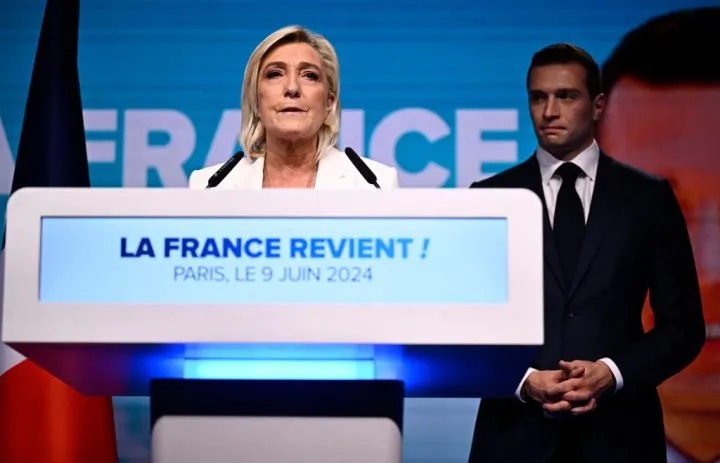“The rise of nationalists and demagogues is a danger for our nation but also for Europe,” said Emmanuel Macron as he announced his general election. Strong talk, as befits his newly-called general election campaign but is that really what has just happened? Look closely and the results are more nuanced — and more interesting.
If anything, we can see the taming of some populist shrews. In France, Le Pen’s National Rally hit 30 percent only after her long attempt to detoxify, mellowing her agenda and, recently, kick AfD out of her European Parliament grouping. The fresh-faced Jordan Bardella, twenty-eight, was the face of Le Pen’s Euro campaign. Macron’s snap election is perhaps intended to kill Le Pen’s presidential hopes by cursing her with forcing her into government. Wielding or sharing power teds to kill your support after a while.
It’s nonsense to pretend that these parties are part of one ‘far right’ or radical-right lump
Just ask the members of Germany’s traffic light coalition, who all suffered, while the opposition AfD party prospered. The Sweden Democrats, also in a governing coalition, fell two points to thirteen points. Even Viktor Orbán suffered the government penalty in Hungary where a new center-right (and anti-Orbán) party, Tisza, won almost 30 percent of the vote. Fidesz finished with 45 percent (down eight points), the first time since 2004 that it has won less than half of the vote. Given Orbán’s control of Hungary’s media, this is quite some result. In Poland, Tusk’s moderates finished first with 37 percent and the Law & Justice Party was on 36 pecent, losing six seats.
After eighteen months governing Italy, Meloni has proved she is center-right, not radical. Her Brothers of Italy did well at the expense of the more rabble-rousing Lega from Matteo Salvini. She is moving Italy more towards the center: even Ursula von der Leyen now says her center-right EPP grouping — which came first and did better than predicted with 185 seats (+9) — could work with Meloni’s party.
It’s nonsense to call Meloni’s party “post-fascist” or to pretend that the above parties are part of one “far right” or radical-right lump. Listening to the BBC, who reporters use near-hysterical language about far-right and hard-right, I wonder how its listeners are supposed understand what’s happening on our doorstep. The terms hard-right, far-right, radical right all smack of the partisan reporting we see in America. The other problem is that if they tell each other that the hard-right is rising they will never investigate what just happened in Hungary or how Meloni has come to bring stability to Italy.
These European parties can be jointly categorized together as “new right” — some genuinely racist, some moderate, but all now mainstream in a way that wasn’t the case fifteen years ago. They cohere in two blocs in the European Parliament. The Conservatives and Reformists (ECR) are in fourth place with seventy-three seats (+4) and Identity and Democracy (ID) in fifth place with fifty-eight seats (+9). But as these parties have so little in common, they’re always feuding. As a result, AfD (fifteen seats, up nine) and Fidesz (ten seats, down thirteen) don’t belong to any group. So let’s not pretend that they are a surging force in Strasbourg.
So how do things look now? Same as they did before. The EPP reigns. Then come the Social Democrats (ie, center-left) with 137 seats (-2), then the liberal bloc (“Renew Europe”) in third place. Then the new-right parties. Von der Leyen will almost certainly be given another five-year term and the EU project will continue unchanged.
This article was originally published on The Spectator’s UK website.


























Leave a Reply